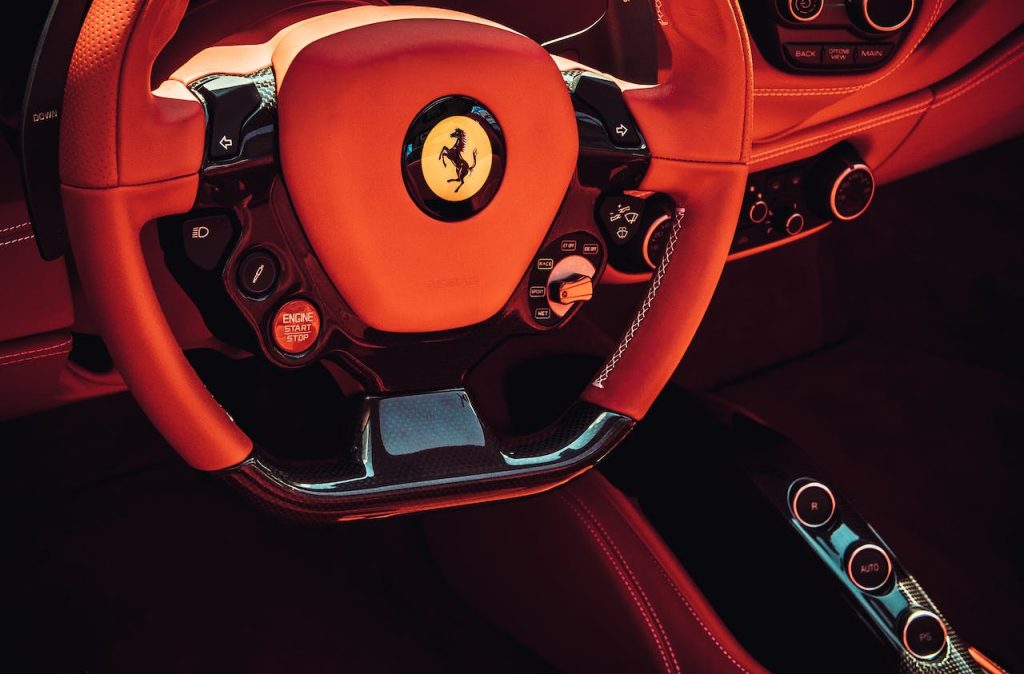Geschatte leestijd: 3 minuten
There is a link between high levels of testosterone in men and their desire to buy luxury goods and status symbols. This is revealed by a new international study.
“A big BMW!”
Suddenly it all becomes clear to me. All those fitness clothing brands that have their models posing with expensive cars. Joel Beukers who recently bought a Rolls Royce Phantom while already having a nice Lambo in the garage.
I thought it was just old-fashioned bodybuilding marketing. Selling the old idea that if you successfully build your body, all other success will follow naturally. Back in the day, this idea was sold by putting bodybuilders on the cover of a magazine with beautiful adoring women in their arms. Thanks to the gold digger YouTube videos, we now know that an expensive car gets a beautiful woman in your bed much faster than big biceps. So, it shouldn’t really be surprising that it’s just testosterone that stimulates the purchase of status symbols like expensive cars.
At least, that’s the conclusion of researchers from Caltech, the Wharton School, INSEAD, ZRT Laboratory, and Sorbonne University [1]. Their research shows that there is a measurable causal relationship between testosterone levels and someone’s desire for status symbols and luxury goods.
Testosterone and long-distance peeing
It would be the ancient alpha behavior of dominance. A contest of long-distance peeing. Status to increase the chance of resources and mates. Survival of the richest.
Hierarchies give rise to advantages at the group level, such as facilitating leader–follower coordination and reducing resource conflict. At the individual level, higher social rank improves mating opportunities, promotes access to resources, reduces stress, and increases social influence
Previous research has already suggested a likely link between testosterone and the need for status. To learn more about this, 243 test subjects aged 18 to 55 were recruited. Half received a testosterone gel, the other half received a placebo. Then everyone was asked about their appreciation for a luxury clothing brand like Armani or a brand that was not luxurious but of decent quality. Participants who received the testosterone gel were more inclined to show a preference for the luxury brands.
Then the men were shown three different advertisements for the same product. The first ad described the product mainly by emphasizing its high quality. The second ad portrayed the same product as a luxury item with terms like ‘prestige’, ‘luxury’, and ‘attention to detail’. The third ad focused on expressions of strength with terms like ‘strong’, ‘indestructible’, and ‘sporty’. You guessed it; the men who received the testosterone gel showed a higher appreciation for the ad emphasizing luxury and prestige.
For those men who give orgasms
How useful are these findings? For a marketer, it’s obviously wonderful. “Aston Martin, for men who give orgasms!”. After all, if you don’t feel the need for such an expensive car, you’re not a ‘real man’. With such a limp sausage, you don’t need Durex. Besides, it doesn’t matter to the marketer whether that testosterone comes from the testicles, a patch, or a syringe.
Do you, as a testosterone bomb, benefit from it yourself? Not really. You now know that your desire for expensive sunglasses, designer clothing, and a fancy car may be driven by your testosterone. And then? You probably already knew that you don’t buy a gold-colored Rolls Royce Phantom for practical reasons. If you buy a car that screams even louder than yourself, you’re probably not too busy with deep contemplation and self-reflection.
Now I must admit that I was a huge fan of Top Gear and drooled over hypercars every Friday night. Yet I don’t see myself quickly buying a Ferrari or a Bugatti if I win the lottery tomorrow. For some reason, I would feel a bit juvenile if I stepped out of such a thing at the supermarket. But I’m already 41. Must be my testosterone.
References
- Single-dose testosterone administration increases men’s preference for status goods. G. Nave, A. Nadler, D. Dubois, D. Zava, C. Camerer & H. Plassmann. Nature Communicationsvolume 9, Article number: 2433 (2018)

